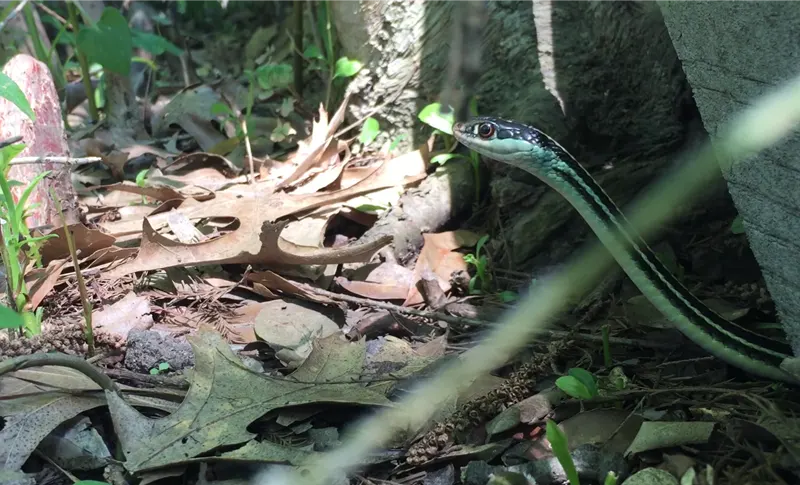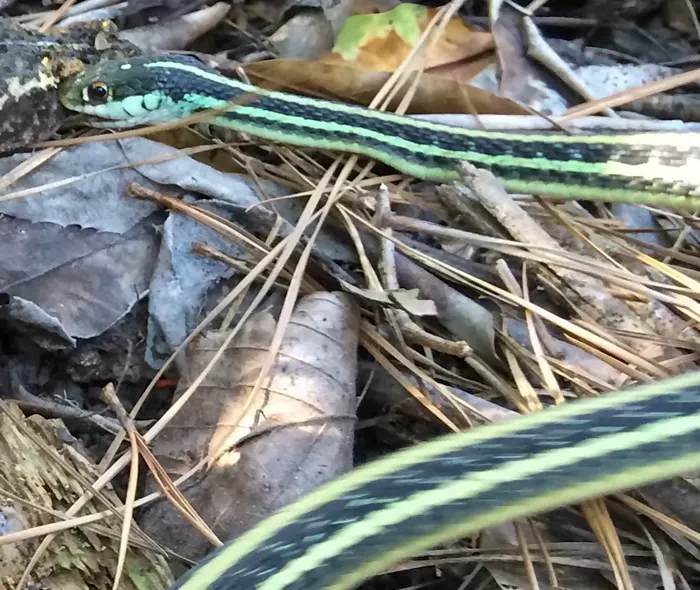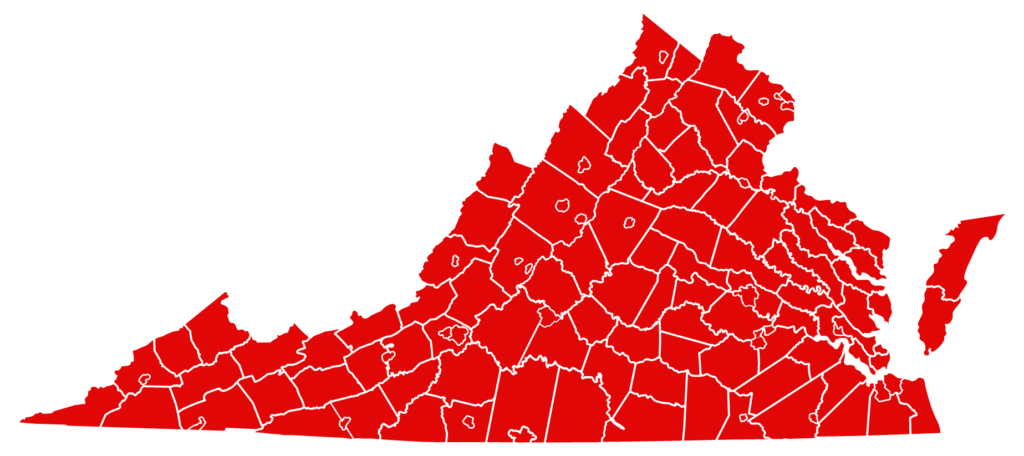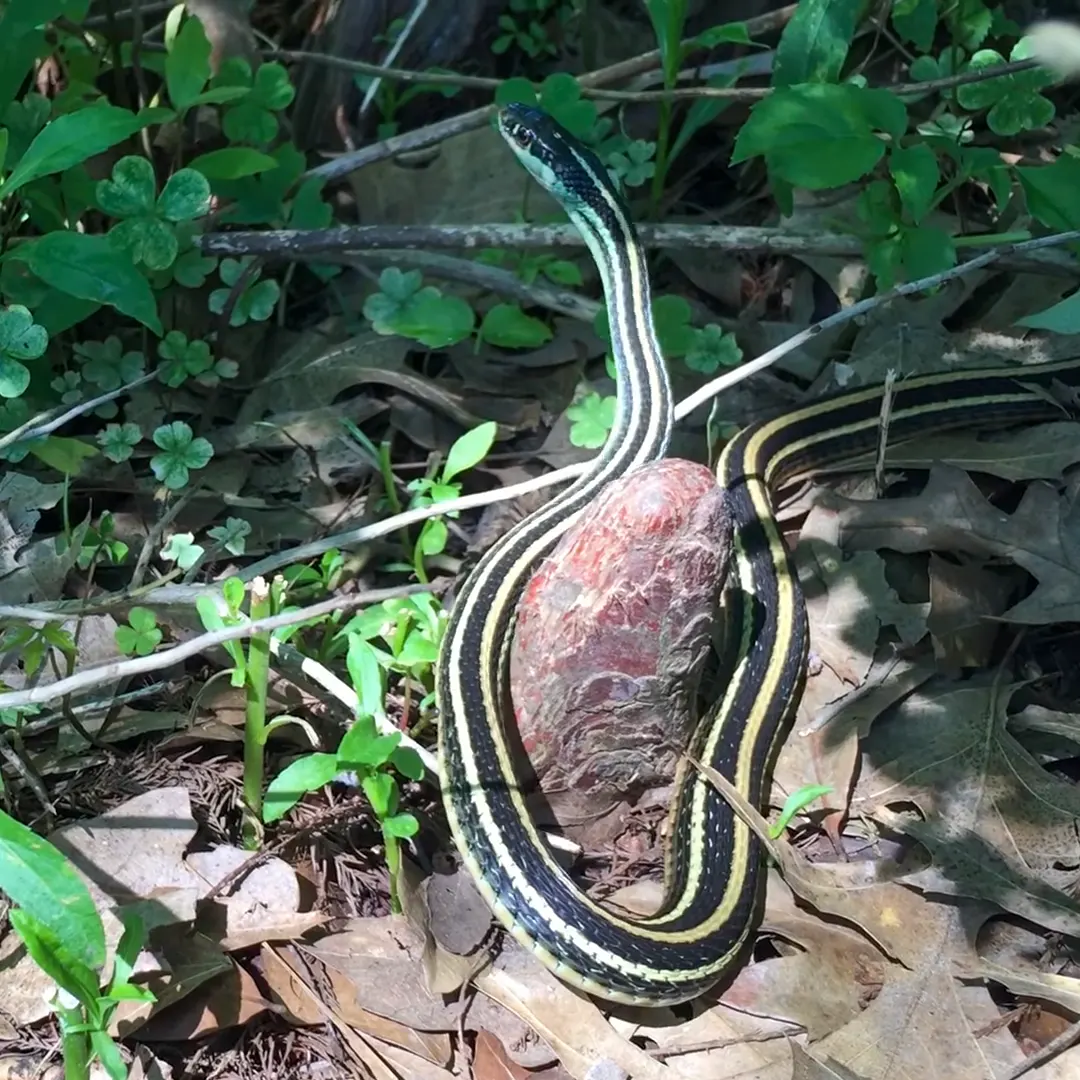
- Scientific Name
- Thamnophis saurita saurita
- Range
- All of Virginia
- Also Called
- Riband Snake, Striped Racer
- Venomous
- No
- Features
- Brown, Nearly Black body with 3 bright yellow or cream stripes
- Prey
- Amphibians and Small Fish
- Litter Size
- 3 - 26 Live Snakes per Birth
- Life Span
- Unknown (10 - 11 Years in Captivity)
- Length
- 18 - 26 Inches
Quick Links for Common Ribbon Snake
Common Ribbon Snake Description
Common Ribbon Snake Appearance
Size
This snake is normally between 18 to 26 inches long, however, the record length for this snake is about 38.2 inches long, which was found here in Virginia.
Juveniles tend to be more than 6 – 8 inches long.
Common Ribbonsnake Behavior
These snakes are secretive and prefers not to be seen by any potential threats. As such, finding these snakes can be rather rare.
These snakes tend to be active during the evening, and during the day they can be found under rocks and debris.
These snakes do not bite when handled, and will attempt to flee into the sand if you try to capture it.
It is illegal in Virginia to keep Wild Snakes as pets
Range and Habitat of The Common Ribbon Snake
Range
These snakes can be found everywhere in Virginia, however specimens haven’t been found in every county. But they cover a large enough range that it is safe to say they are everywhere in Virginia.
In the rest of the United States, they can be found all throughout the south. But they seem to avoid or at least appear in much smaller numbers in the Appalachian Mountains.
Habitat
The Ribbonsnake is semi-aquatic and is seen in many habitats. They can be found anywhere there is water such as rivers, marshes, swamps, ditches, and floodplains. They can be seen on branches, bushes, or grasses next to water.
Diet
They like to eat amphibians and fish, however they also eat beetles, larvae, and spiders.
Reproduction and Young
Reproduction
Mating for these snakes occurs in April and May. And then will lay their eggs in late July and September.



